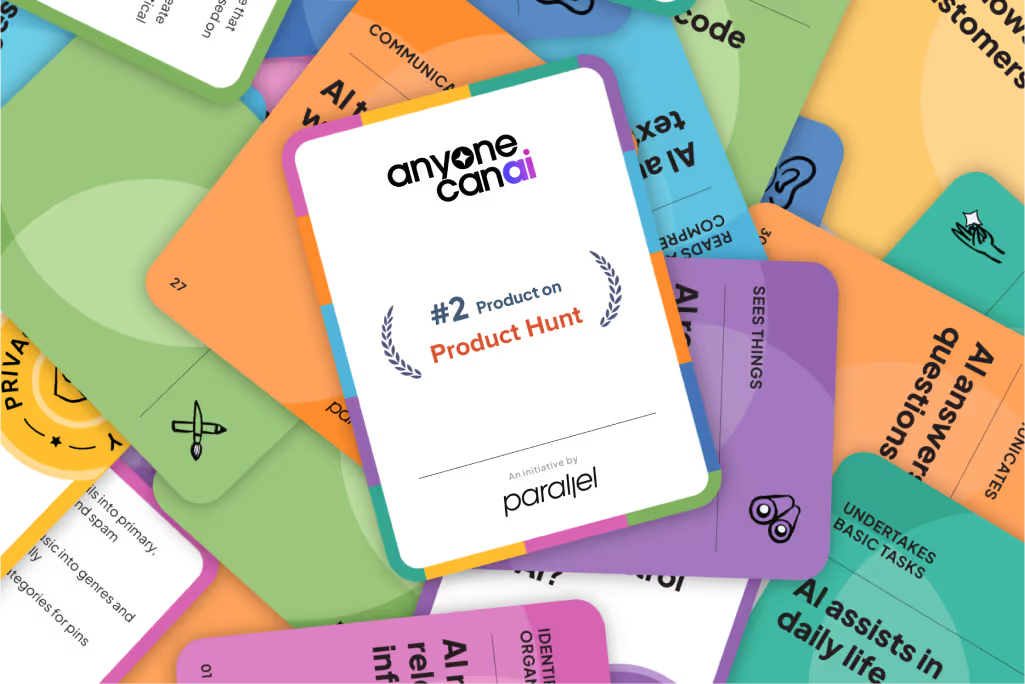Training KPMG on Using Design Sprints to Transform Government Tech
To stay on top of the latest problem-solving and design techniques, KPMG asked Parallel to run a remote workshop on how Design Sprints can be used to improve and accelerate government products.
.avif)
At Parallel, we spend a lot of our time running Design Sprints to build awesome products. And look, we're fans — we built our company around them! But we also love the days when we get to break out of sprint mode and switch to teacher mode.
We got to do just that on July 13, when we took to Zoom with KPMG. We were excited to host a virtual workshop for 40 leaders from KPMG's Digital Government Centre for Excellence and Government Advisory teams.
Today KPMG is working to empower change and tackle critical issues head on. They work with the Indian government to help it address citizens' needs while becoming more responsive, flexible and accountable. This is no easy task, especially given how quickly the country, economy and government are evolving.
To stay on top of the latest problem-solving and design techniques, KPMG asked Parallel to run a remote workshop on how Design Sprints can be used to improve and accelerate government products.
Workshop Roundup
We kicked off the remote workshop with the basics — what are Design Sprints, and why are they worth caring about?
We first walked KPMG's team through a brief history of design thinking (did you know it dates back to 1969?) and explained how Design Sprints are a practical recipe for design thinking.
Developed by Jake Knapp at Google Ventures while he was creating Google Meet, Design Sprints are a great way to help teams innovate faster, save companies loads of time and money, and rescue teams from never-ending discussions.

Next, we broke down what exactly goes into a Design Sprint — and not just the traditional Jake-Knapp sprint. We also went into detail about how we've tweaked our own process to suit our engagements, which has now been tested with multiple government partners.
Here's what a standard Design Sprint looks like:
- Day 1: Aligning on the challenge. We bring all stakeholders together to identify the product's key problem statements and align on clear goals.
- Day 2: Creating solutions. Instead of bringing in designers or consultants to create designs, we help the entire team become designers. After a series of structured exercises, everyone from the CEO to developers become comfortable creating original wireframes and sketches.
- Day 3: Art gallery. We create an Art Gallery, where everyone's ideas are displayed on the wall. The catch? They're all anonymous. This keeps office politics and bias out of the equation while the team votes on their favorite solution and elements.
- Day 4: Rapid prototyping. Our design team turns the top solution from Day 3 into a high-fidelity prototype that looks and feels like a real product.
- Day 5: User testing. We bring our prototype to 5 users and watch how they interact with everything. This helps us see not just what the problems are, but why each is a problem.

Not convinced? We explained how business powerhouses — such as Google, Slack, Lego, Headspace, Blue Bottle Coffee, Pocket, New York Times and KLM Airlines — have used Design Sprints to improve everything from brand positioning to airport experiences.
After explaining the 5 principles behind Design Sprints, we went deep into 2 of our government case studies — Digilocker and Niti Aayog's National Data and Analytics Platform (NDAP).
Before we did these projects, we were a bit unsure whether product thinking and the Indian government would mesh. After all, government tech isn't known for design or agility. However, working with the Digilocker and Niti Aayog teams convinced us that the government can be just as innovative and forward-thinking as any company or startup.
We brought the KPMG team on this same journey with in-depth looks at the two projects. We used real prototypes, boards, and documents to show how we used Design Sprints to reimagine the Digilocker app in just 10 days, and transform NDAP from a vision document to live website in just 3 months.
This included specific insights on how to make Design Sprints go smoothly, how to tackle common challenges, and what pitfalls to avoid with government projects.

💛 from KPMG
After just an hour, the KPMG team was excited and ready to tackle Design Sprints with government teams.
"I found the case studies related to products designed for government very helpful, not only from design point of view, but also the way all the stakeholders (including government officers across levels) can be brought together in a structured manner to define the problem statement and arrive at the desired design in line with the common objective."
–Satya Sinha
Manager, Infrastructure, Government and Healthcare (IGH), KPMG
We were thrilled to run this workshop with KPMG, and we can't wait to continue working with their team on the latest government projects.
Know of a government project that we should take on, or a new workshop we should run? Drop us a note in the comments.







.avif)





